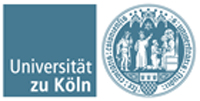The mitochondrial connection: Why blood vessels in wounds and tumors start sprouting

A team of scientists from the University of Cologne’s CECAD Cluster of Excellence (Cellular Stress Responses in Aging-Associated Diseases) led by Hamid Kashkar has found that new sprouts of blood vessels during development, wound healing or tumor growth are controlled by cellular energy metabolism involving mitochondrial respiration.
Mitochondria, also known as the cell’s powerhouse, provide the organism with vital energy. The endothelial cells that build up a thin layer within the vessels utilize mitochondrial energy production, as shown in this study.
Immunologist Kashkar and his team provide genetic evidence of the requirement for mitochondrial respiration during angiogenesis – the forming of new sprouts of vessels – and shed new light on the metabolic control of vascular formation during development, tissue repair and cancer.
The decline of mitochondrial activity in endothelial cells could play an important role in aging and aging-related diseases – but also in tumor growth – and could therefore become a focus for therapeutic treatments in future.
The study ‘Mitochondrial respiration controls neoangiogenesis during wound healing and tumor growth’ was published in Nature Communication.
Blood vessels remain mostly quiescent throughout adult life, yet they possess the capacity to rapidly form new sprouts (neoangiogenesis) in response to injury or under pathological conditions, such as tumor growth, where additional blood supply is required.
The inner surface of blood vessels is lined by a thin layer of endothelial cells with remarkable functional plasticity that can rapidly switch from a quiescent to a highly angiogenic state. This angiogenic switch has long been considered to be mainly controlled by vascular growth factors.
The Cologne research team studied the physiological role of mitochondrial respiration in blood vessels in cell cultures and mice. Kashkar’s group showed that mitochondrial respiration is required for neoangiogenesis.
‘We found that a blood vessel-specific blocking of mitochondrial function in mice results in embryonic lethality. In contrast, we could not detect any obvious change in adult mice without endothelial mitochondrial respiration. These mice, however, revealed slowed wound vascularization and healing and reduced tumor growth and angiogenesis,’ explain Lars Schiffmann and Paul Werthenbach, the first authors of the study.
‘The lack of mitochondrial activity in endothelial cells under normal conditions with low energy consumption does not primarily cause vascular alteration. In contrast, endothelial cells sprouting with high energy demand and under challenging nutrient conditions during tissue repair or tumor growth are highly dependent on mitochondrial function,’ adds Hamid Kashkar.
The current study hypothesizes that the progressive decline of mitochondrial activity in aging and aging-associated diseases reduces angiogenesis and thereby the regenerative capacity of aging tissues. Independently thereof, the specific targeting of tumor blood vessels with mitochondrial agents could represent a valuable cancer therapy and should be explored in future.
Media Contact:
Professor Dr. Hamid Kashkar
Principal Investigator, Institute for Medical Microbiology, Immunology and Hygiene
+49 221 478-84091
h.kashkar@uni-koeln.de
Press and Communication:
Robert Hahn
+49 221 470-2396
r.hahn@verw.uni-koeln.de
Publication:
DOI: 10.1038/s41467-020-17472-2
Media Contact
More Information:
http://www.uni-koeln.de/All latest news from the category: Health and Medicine
This subject area encompasses research and studies in the field of human medicine.
Among the wide-ranging list of topics covered here are anesthesiology, anatomy, surgery, human genetics, hygiene and environmental medicine, internal medicine, neurology, pharmacology, physiology, urology and dental medicine.
Newest articles

First-of-its-kind study uses remote sensing to monitor plastic debris in rivers and lakes
Remote sensing creates a cost-effective solution to monitoring plastic pollution. A first-of-its-kind study from researchers at the University of Minnesota Twin Cities shows how remote sensing can help monitor and…

Laser-based artificial neuron mimics nerve cell functions at lightning speed
With a processing speed a billion times faster than nature, chip-based laser neuron could help advance AI tasks such as pattern recognition and sequence prediction. Researchers have developed a laser-based…

Optimising the processing of plastic waste
Just one look in the yellow bin reveals a colourful jumble of different types of plastic. However, the purer and more uniform plastic waste is, the easier it is to…



